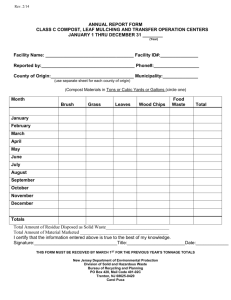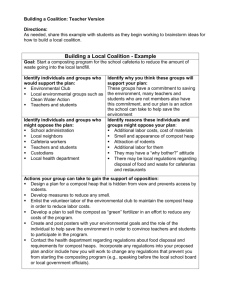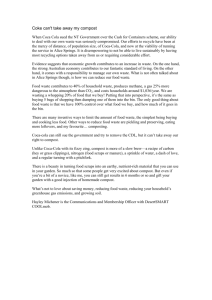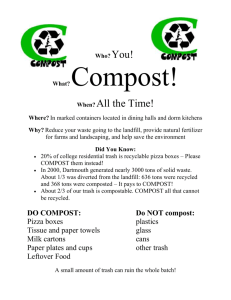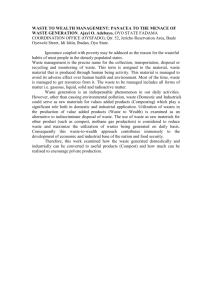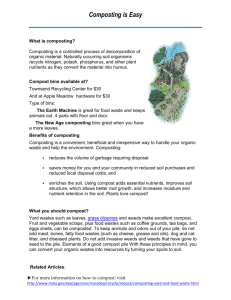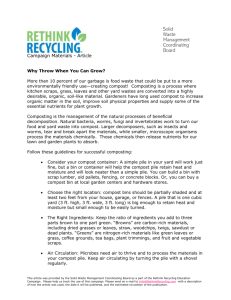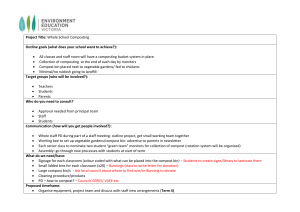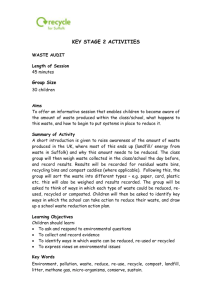Composting Tips - South Frontenac
advertisement
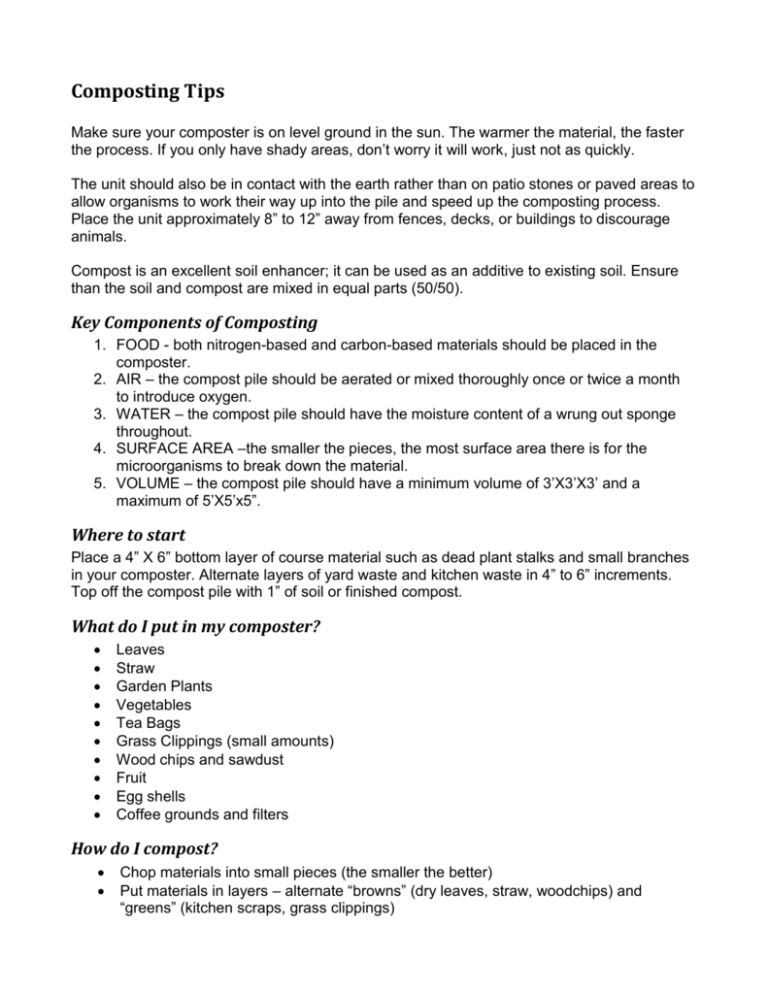
Composting Tips Make sure your composter is on level ground in the sun. The warmer the material, the faster the process. If you only have shady areas, don’t worry it will work, just not as quickly. The unit should also be in contact with the earth rather than on patio stones or paved areas to allow organisms to work their way up into the pile and speed up the composting process. Place the unit approximately 8” to 12” away from fences, decks, or buildings to discourage animals. Compost is an excellent soil enhancer; it can be used as an additive to existing soil. Ensure than the soil and compost are mixed in equal parts (50/50). Key Components of Composting 1. FOOD - both nitrogen-based and carbon-based materials should be placed in the composter. 2. AIR – the compost pile should be aerated or mixed thoroughly once or twice a month to introduce oxygen. 3. WATER – the compost pile should have the moisture content of a wrung out sponge throughout. 4. SURFACE AREA –the smaller the pieces, the most surface area there is for the microorganisms to break down the material. 5. VOLUME – the compost pile should have a minimum volume of 3’X3’X3’ and a maximum of 5’X5’x5”. Where to start Place a 4” X 6” bottom layer of course material such as dead plant stalks and small branches in your composter. Alternate layers of yard waste and kitchen waste in 4” to 6” increments. Top off the compost pile with 1” of soil or finished compost. What do I put in my composter? Leaves Straw Garden Plants Vegetables Tea Bags Grass Clippings (small amounts) Wood chips and sawdust Fruit Egg shells Coffee grounds and filters How do I compost? Chop materials into small pieces (the smaller the better) Put materials in layers – alternate “browns” (dry leaves, straw, woodchips) and “greens” (kitchen scraps, grass clippings) Add water if necessary-the compost needs to be slightly damp (like a wrung out sponge) During non-winter months, turn the pile with a pitchfork, shovel or compost turner Will my compost pile smell? A compost pile that is working well should not have an unpleasant odour. You may experience odour problems if: Your compost pile is too wet Your compost pile is too compacted You have added too much grass There is not enough air in your compost. When is the compost ready? Finished compost is dark and crumbly in texture and will have a pleasant earth-like smell. If you follow the instructions that came with your unit, you could have results in as little as three to six months. To remove the compost, scoop it through the trap door on your unit. Pick or screen out any lumps or bits of uncomposted material and put them back in to the composter. The Benefits of Compost Helps sand soil retain moisture and prevents drought Can be used to break up clay or sandy soils Adds nutrients to all soils Improves drainage, and reduces soil erosion Enhances the colour of plants. Reduces the amount of waste set out on the curb by approximately 40% What do I do with the finished product? Finished compost can be spread on your lawn no thicker than one centimetre. Add to houseplants Work into your garden soil, no ore than eight centimetres thick Make “compost tea” by soaking a burlap bag of compost in a large pail or can of water. The result water is nutrient rich for watering your garden
